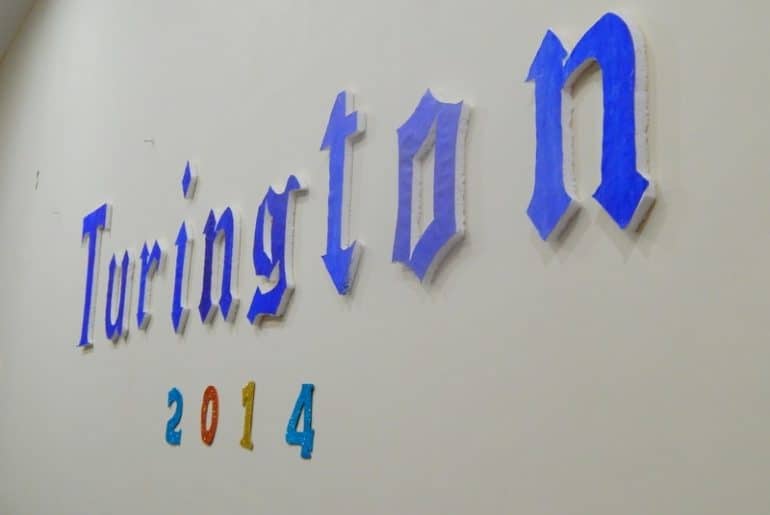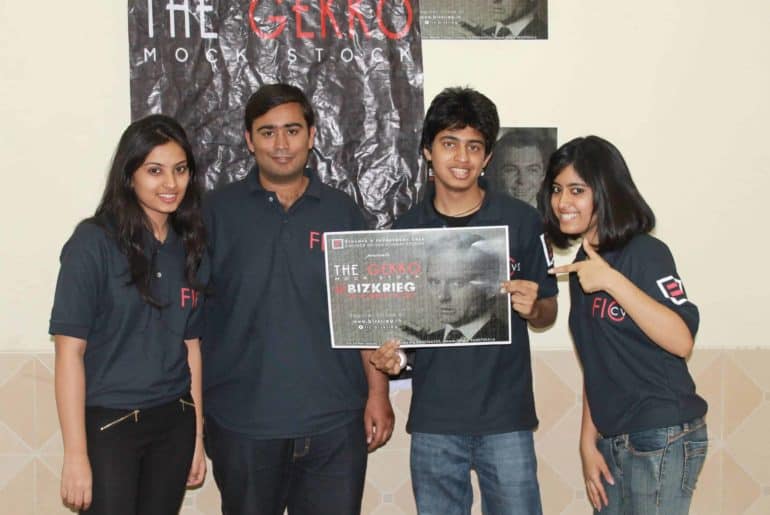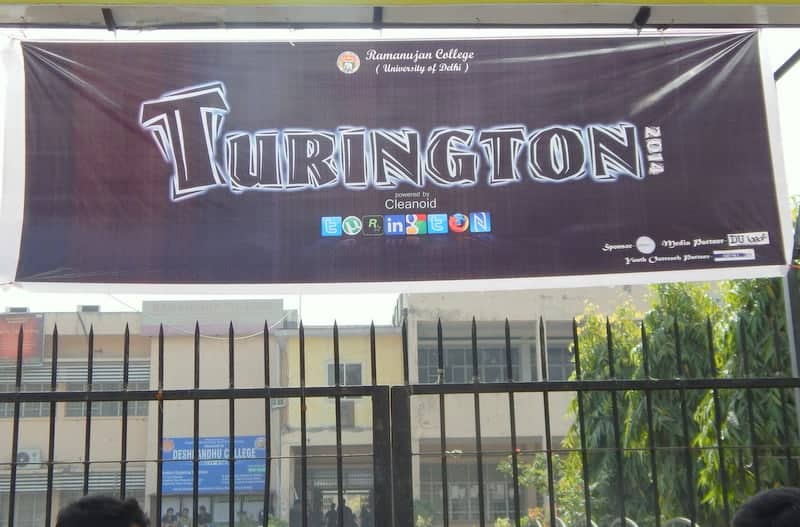 The first event of the day was Game ff Codes which was based on C++ Coding. The event was conducted in two rounds. The first round included 15 teams from colleges like G.B. Pant, DTU, Shaheed Bhagat Singh and Ramanujan College battling it out to proceed to the final round. In this round the participants had to answer a series of multiple choice questions in a 30 minute time span. The top six teams made it through to the final round where they were given one hour to create two C ++ Codes. The fastest team, which turned out to be Yashbir and Prashant from G.B. Pant, was declared the winner.
The second event of the day was the IT Debate, which was conducted in the auditorium. There were two rounds in this event as well. The first round was more of an extempore where participants were given 1:30 minutes to speak on the topic given to them and a grace of 30 seconds to sum up their conclusion. The participants were given the freedom to choose their stance on the topic. However, in the second round this was not the case. It was followed in a turncoat format, that is, each participant had to speak both for and against the motion. A total of 5 minutes was given to each participant. The winner of this event was Deepu from Deshbandhu College who spoke on the topic “Social Networking Sites are a threat to society” and the second prize went to Lashika from Ramanujan College. A few other events were taking place together in three different locations.
LAN Gaming included Counter Strike where 6 teams of 5 members from DTU, Maharaja Agrasen, JIMS, Deshbandhu and Ramanujan were battling it out for the first position. Each match was of 5 rounds and the winning team needed 3 to win. The winners were Sohail, Amay, Pawan,Prince and Sparsh from Maharaja Agrasen College while the second prize went to Sameer, Abhijeet and Harshvardhan from Ramanujan College. Another popular gaming event was Flappy Bird. The rules were simple. Each participant was to be given two chances and the summation of points scored in these two chances would ultimately decide the winner. FIFA too had a good amount of registrations coming in from different colleges. A knockout system was followed and out of 10 participants, 3 were sent to the final round which was held on Day 2.
The first event of the day was Game ff Codes which was based on C++ Coding. The event was conducted in two rounds. The first round included 15 teams from colleges like G.B. Pant, DTU, Shaheed Bhagat Singh and Ramanujan College battling it out to proceed to the final round. In this round the participants had to answer a series of multiple choice questions in a 30 minute time span. The top six teams made it through to the final round where they were given one hour to create two C ++ Codes. The fastest team, which turned out to be Yashbir and Prashant from G.B. Pant, was declared the winner.
The second event of the day was the IT Debate, which was conducted in the auditorium. There were two rounds in this event as well. The first round was more of an extempore where participants were given 1:30 minutes to speak on the topic given to them and a grace of 30 seconds to sum up their conclusion. The participants were given the freedom to choose their stance on the topic. However, in the second round this was not the case. It was followed in a turncoat format, that is, each participant had to speak both for and against the motion. A total of 5 minutes was given to each participant. The winner of this event was Deepu from Deshbandhu College who spoke on the topic “Social Networking Sites are a threat to society” and the second prize went to Lashika from Ramanujan College. A few other events were taking place together in three different locations.
LAN Gaming included Counter Strike where 6 teams of 5 members from DTU, Maharaja Agrasen, JIMS, Deshbandhu and Ramanujan were battling it out for the first position. Each match was of 5 rounds and the winning team needed 3 to win. The winners were Sohail, Amay, Pawan,Prince and Sparsh from Maharaja Agrasen College while the second prize went to Sameer, Abhijeet and Harshvardhan from Ramanujan College. Another popular gaming event was Flappy Bird. The rules were simple. Each participant was to be given two chances and the summation of points scored in these two chances would ultimately decide the winner. FIFA too had a good amount of registrations coming in from different colleges. A knockout system was followed and out of 10 participants, 3 were sent to the final round which was held on Day 2.
 Another attraction was the Rubix Cube event. There were about 12 participants from colleges like G.B. Pant, Ramanujan, Maharaja Agrasen, SRCC and Deshbandhu. There were two rounds. The first round demanded the participants to complete one colour within 3 minutes. Then a pattern was given to the participants who had to complete the pattern in 2 and half minutes. In the final round, the participants had to complete the whole Rubix Cube and the fastest one to do so was Vishal Bhatt from G.B. Pant who won the first prize.
Finally the treasure hunt was conducted in the Archery Field, for which about 14 teams signed up. The rules stated that in order to search for a clue, a team had to complete a dare. This dare – clue cycle went on about five times. These clues were pieces to a puzzle which formed an IT device which was to be identified by the team who collected the clues. Clues were made in sets of five and the name of the teams was mentioned on the envelope. Accordingly, the teams had to find the clues in their name. The results for this event were also declared the next day.
To sum up Day 1, the fest was well organized, and except for some minor time constraints, it exceeded all expectations, as this was the first batch of B.Tech Computer Science students in Ramanujan College.
Another attraction was the Rubix Cube event. There were about 12 participants from colleges like G.B. Pant, Ramanujan, Maharaja Agrasen, SRCC and Deshbandhu. There were two rounds. The first round demanded the participants to complete one colour within 3 minutes. Then a pattern was given to the participants who had to complete the pattern in 2 and half minutes. In the final round, the participants had to complete the whole Rubix Cube and the fastest one to do so was Vishal Bhatt from G.B. Pant who won the first prize.
Finally the treasure hunt was conducted in the Archery Field, for which about 14 teams signed up. The rules stated that in order to search for a clue, a team had to complete a dare. This dare – clue cycle went on about five times. These clues were pieces to a puzzle which formed an IT device which was to be identified by the team who collected the clues. Clues were made in sets of five and the name of the teams was mentioned on the envelope. Accordingly, the teams had to find the clues in their name. The results for this event were also declared the next day.
To sum up Day 1, the fest was well organized, and except for some minor time constraints, it exceeded all expectations, as this was the first batch of B.Tech Computer Science students in Ramanujan College.
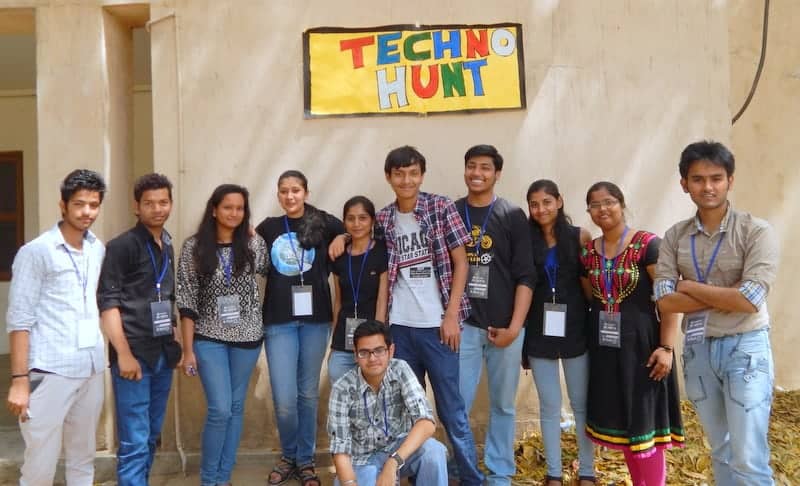 Day 2 kicked off with a presentation by AISEC IIT Delhi, which focused on their Global Entrepreneurs Program. Immediately after that, the IT Quiz began, with a total of 7 teams participating. The Quiz consisted of three rounds, which tested the teams’ knowledge of technology, IT brands and the internet. It ended with an exciting final round in which the teams formed questions for each other! Tushar and Dipojjal from MSIT came first while Renu from DTU came in second, after performing admirably during all three rounds.
Following that, Bug Off, a programming event took place with 10 participants who had to fix 5 errors in the C++ codes in 45 minutes. Manish and Prashant from G.B. Pant took home the first and second prize respectively. The next event lined up for the day was Brainteasers, which was held in the auditorium. The 13 participants were tested through word puzzles, Sudoku and a tagline detecting round. While Renu from DTU came second, Digvijay was announced the winner.
Day 2 kicked off with a presentation by AISEC IIT Delhi, which focused on their Global Entrepreneurs Program. Immediately after that, the IT Quiz began, with a total of 7 teams participating. The Quiz consisted of three rounds, which tested the teams’ knowledge of technology, IT brands and the internet. It ended with an exciting final round in which the teams formed questions for each other! Tushar and Dipojjal from MSIT came first while Renu from DTU came in second, after performing admirably during all three rounds.
Following that, Bug Off, a programming event took place with 10 participants who had to fix 5 errors in the C++ codes in 45 minutes. Manish and Prashant from G.B. Pant took home the first and second prize respectively. The next event lined up for the day was Brainteasers, which was held in the auditorium. The 13 participants were tested through word puzzles, Sudoku and a tagline detecting round. While Renu from DTU came second, Digvijay was announced the winner.
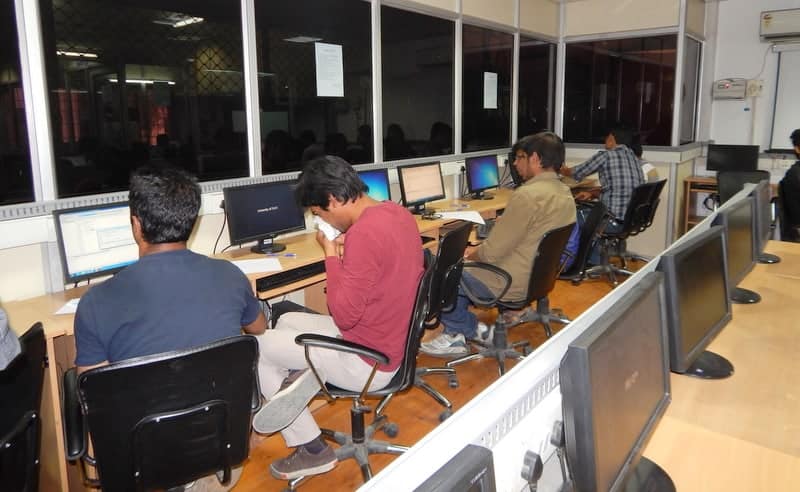 The afternoon session saw a seminar being organised for the students with Dr. S.K Matto as the Chief Guest. He spoke at length about Alan Turing, the Father of Computer Science after whom the event Turington had been named. He also spoke about the importance of a holistic education system and went on to commend the organisers and the participants for their effort.
Webiesta, a web designing competition followed the seminar. The participants had to crack a Login Page, to reach the Target Page, which then had to be designed. Manish from G.B. Pant, who’d also won Bug Off, came first, followed by Keshav from Ramanujan College.
The LAN Gaming results from the two days were also announced. For the FIFA event, Naman from Deshbandhu College emerged victorious while Vandit came second. For Need for Speed, Tarun (BCIIT) and Ambesh (Amity University) were declared first and second respectively.
Ishaan Sengupta
Priyanka Banerjee
Image credits: Pawan Pandey]]>
The afternoon session saw a seminar being organised for the students with Dr. S.K Matto as the Chief Guest. He spoke at length about Alan Turing, the Father of Computer Science after whom the event Turington had been named. He also spoke about the importance of a holistic education system and went on to commend the organisers and the participants for their effort.
Webiesta, a web designing competition followed the seminar. The participants had to crack a Login Page, to reach the Target Page, which then had to be designed. Manish from G.B. Pant, who’d also won Bug Off, came first, followed by Keshav from Ramanujan College.
The LAN Gaming results from the two days were also announced. For the FIFA event, Naman from Deshbandhu College emerged victorious while Vandit came second. For Need for Speed, Tarun (BCIIT) and Ambesh (Amity University) were declared first and second respectively.
Ishaan Sengupta
Priyanka Banerjee
Image credits: Pawan Pandey]]>
The night of 6th April saw the repeat of the 2011 Cricket World Cup final in the Twenty20 format as India met Sri Lanka in an all-Asian final. The game was highly anticipated what with the huge fan-following the game enjoys, especially in the Indian subcontinent.
Sri Lanka reached the finals with the Rain Gods turning in their favour as the semi-final between West Indies and Sri Lanka was abandoned due to rain and the Lankans were judged the winners by the Duckworth-Lewis Method. India had had a very strong run in the competition with a hundred percent winning record in the tournament this year. The Indian side overcame a massive total of 172 runs set up South Africa in the Semi-final to win the game with 5 balls to spare. Virat Kohli shined through the game knocking an unbeaten 72 runs off 44 balls to clinch the match.
If Mahendra Singh Dhoni’s team went on to win the final, it would be the first team ever in the history of the sport to hold all the major titles in its trophy cabinet, having won the One-Day World Cup in 2011 and the Champions Trophy last year. The odds appeared to be in favour of the Indian side as Sri Lanka had faced a cursed streak in major trophy finals in the past, losing the One-Day World Cup finals in 2007 and 2011 and the Twenty20 World Cup final in 2009 and 2012.
Sri Lanka won the toss and opted to bowl first. Rohit Sharma and Ajinkya Rahane were the openers for the Indian side. Rahane once again took an early exit to the dressing room with 3 runs off 8 balls. Virat Kohli delivered a note worthy performance yet again, again knocking 77 runs off 58 balls. The disappointment for the Indian side turned out to be the usually reliable, Yuvraj Singh, whose hard-hitting style is world renowned. He was only able to gather 11 runs off 21 balls much to the frustration of Indian fans, pretty evident from the scenes in the stadium. Overall, India put up a below-par total of 130 runs for 4 wickets.
Sri Lanka’s innings was a perfect example of the saying, “Slow and steady wins the race” as Kumar Sangakkara hit 52 runs for 32 balls remaining unbeaten to clinch the title for the Lankans and to conclude his T20 career in a perfect way. Sri Lanka won the match by 6 wickets.
The Lankans finally broke their curse in the finals much to the disappointment of the 1 billion supporters in India. Sangakkara was named the Man of The Match for match-winning innings while Virat Kohli got a well-deserved Player of the Series award for his batting prowess.
Image courtesy: sports.ndtv.com
The Education Tree initiated Youth Photography Festival in New Delhi starting 29th March for four days. The inauguration for the festival was held at DLF Place, Saket on 29th March which was followed by Photo Treasure Hunt. A live photo booth was set up for the first day as well. Day 2 at Youth Photography Festival had an early morning photo-walk at Chandni Chowk where the photographers captured the real essence of tradition Dilli. Second day also witnessed a photo exhibition and a jam session at DLF Place.
For the last two days, the festival moved on to the North Campus, Delhi University for photography talks by experienced and young photo artists. The artist talks were held at Kirori Mal College and Ramjas College on 31st March and 1st April respectively.
It is most important to understand your own photographs: S.Paul
S.Paul, India’s most published and awarded photographer internationally shared his personal experiences in the field of photography during the photo talk on 31st March at Kirori Mal College. Talking about cameras and photographs, Mr Paul also displayed his work for the audience on screen, wherein he was explaining the reference and relevance of each photograph. His display collection mainly revolved around the theme “trees”, which denoted The Education Tree, organizers of Youth Photography Festival.
Mr. Paul during his 2 hour session created an interactive environment in the chat room. He was cracking light jokes to which the visitors were all praises for the photographer. The artist was talking in Hindi and answering queries of photographers who had come to attend the photo talk.

He stressed on the fact that a photographer should understand his own work. “Being a good photographer is not that difficult, but being a good analyst is must”, he said. Mr Paul also felt that if someone cannot explain what he or she has clicked, that person is not a good photographer. He also talked about various competitors and friends when he decided to choose photography as a career and discussed pictures subject wise like community, nature, fashion among others.
On being questioned about how should one choose his subject for photography, S. Paul said, “Let us take street shooting, for example. In your first visit do not take the camera along. Studying the culture of street is must, knowing what happens when and where is necessary for a photographer. If one happens to understand this, then take your camera to shoot your subject.”
Photographer can’t afford to miss a shot: P. Kumar
P. Kumar is a wildlife photographer and a teacher of zoology at Hans Raj College, Delhi University. He talked about how a photographer should learn composition to be good at what he wants to be. He dictated various incidents of his life associated with the field of photography. He displayed his wildlife works on the screen and explained the story behind each picture. His collection included photographs from wildlife sanctuaries, zoos and jungles. The screen also displayed works which ranged from seas to mountains and from cities to villages.
Kumar based his lecture on the four P’s – Passion, Purpose, Photography and Prayer. He associated the photographers with the elements of photography that are faith, prayer and conviction. He also talked about abilities of a photographer that can go waste if there is lack of these elements.
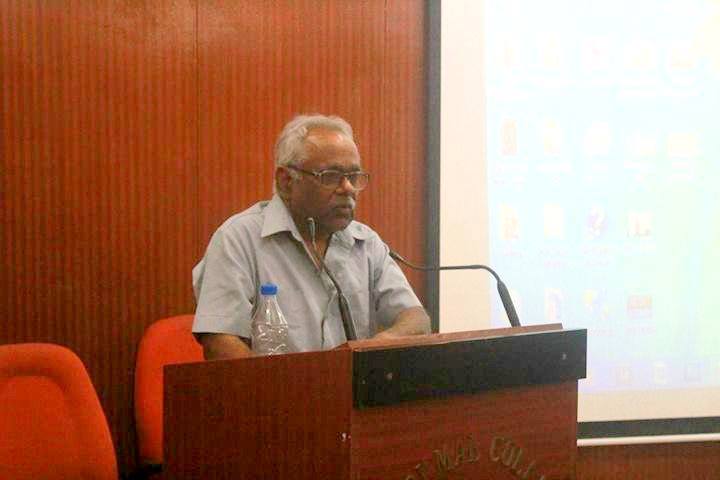
P. Kumar displayed his pictures with Anurag Kashyap and Abhinav Kashyap (alumnus of Hans Raj College) and talked about his heroes. Displaying magazine covers on which his pictures were featured, he says, “Photography needs an element of desperation. Until and unless you are dying to click something, that won’t be shot well.” He mentioned how the kind of camera isn’t important, but the style is. “You will have a big camera and a heavy tripod, you will take 20 minutes to set up and you will miss the shot. In photography, one can not afford to miss a shot. If he or she does, he is not a photographer”, he adds.
A little was also discussed about structured system created for the photographers where they do mainstream photography and do not understand the meaning behind it. Before ending the session he threw some light on conceptual imagery and played a few videos shot by him.
It depends on what part of your work you wish to show: Shiv Ahuja
Shiv Ahuja is a young music photographer who based his talk in Ramjas College on 1st April. Shiv, who is a musician himself developed an interest for photography. He also shared his experiences with the bands he used to shoot and the concerts he covered as a photographer. Ahuja highlighted his relations with Raghu Dixit and narrated the story of how he happened to be the photographer of his band.
As a photographer, Shiv says that he loves to travel. “Travel is one thing I can not compromise on. When I travel or go places for a show, in one concert I click around 500 pictures, but out of them not every picture is a great picture. It depends on what you want to show to the world”, he adds. So he gave the photographers tips about ‘how to be smart while creating portfolios.’
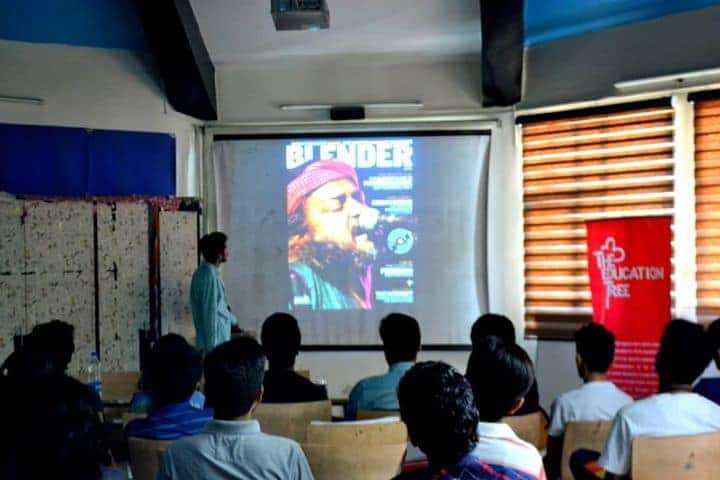
When asked a question about who does he keep in mind while clicking a photograph, the reader (magazines) or the subject (the musician) or his own interest, Shiv answers that it is the final reader who is always in mind. “I am clicking for a magazine. So what matters is what the publisher will like and if published what the public will like.”
Deaf artists get no exposure : Pintoo Kumar
Last speaker for the photography festival was Pintoo Kumar. Pintoo is a deaf photographer associated with Atulya Kala, an organization that works for deaf people. Pintoo through his translator, Smriti told everyone that he is an orphan who was born in Calcutta. He tells about the problems he faced in the school/university both in terms of finance and treatment. “Life for us is a copy paste game”
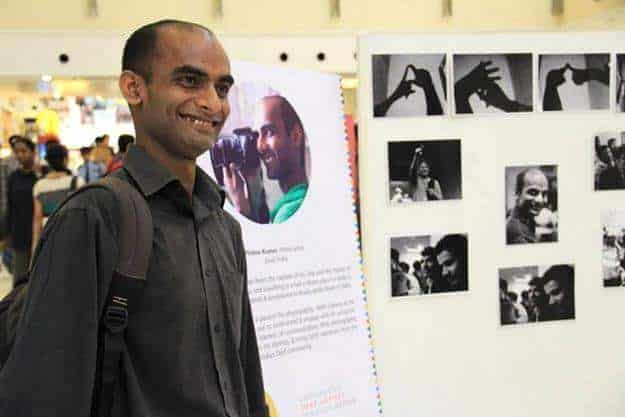
“I love capturing moments. I love telling stories about the culture through my pictures”, says Pintoo. Instead of displaying his photography works on screen, he displayed pictures of those deaf and dumb artists who face the same problems as him but who made made something meaningful out of their lives. Photographs of a deaf writer, another deaf artist, a deaf classical dancer, a deaf and mute tea vendor from Delhi and a picture of him were displayed on the screen. He expressed how all of them are not given opportunities and are given excuses of not being equally able.
Pintoo also displayed four photos which pointed out the sign language for four letters of the word ‘deaf’. Pintoo sets out to understand and engage with his surrounding and transcend the barriers of communication. He was appreciated by everyone by raising the hands, which is a sign language for clapping.
With this the Youth Photography Festival #YPF came to an end.
Image Credit : The Education Tree
]]>The Finance and Investment Cell of College of Vocational Studies successfully organised the preliminary rounds for their annual management festival, Bizkrieg 2014 on the 3rd and 4th of April. The final rounds are scheduled to held at Vallabhbhai Patel Chest Institute in North Campus on Monday, the 7th of April.
The event saw participation of roughly 300 students, from whom 150 have qualified for the finals to be held on Monday. The list of students who have qualified can be accessed here.
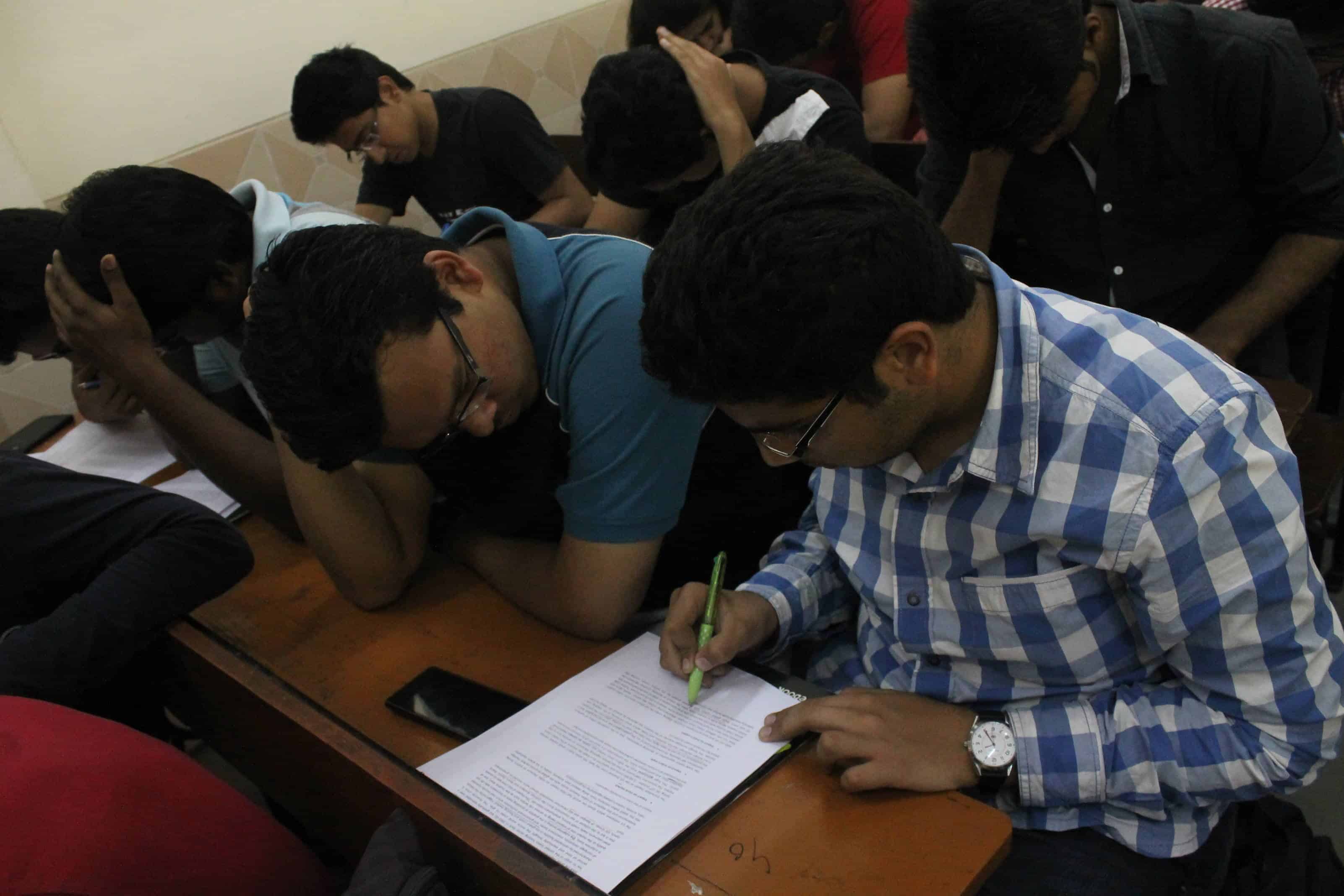
This year, Bizkrieg’14 has been themed The Alternate History, ‘inspired by the idea to alter history and build the future on it’. Apart from the campus prelims, students were facilitated with the option of online prelims in the form of a Google Form.
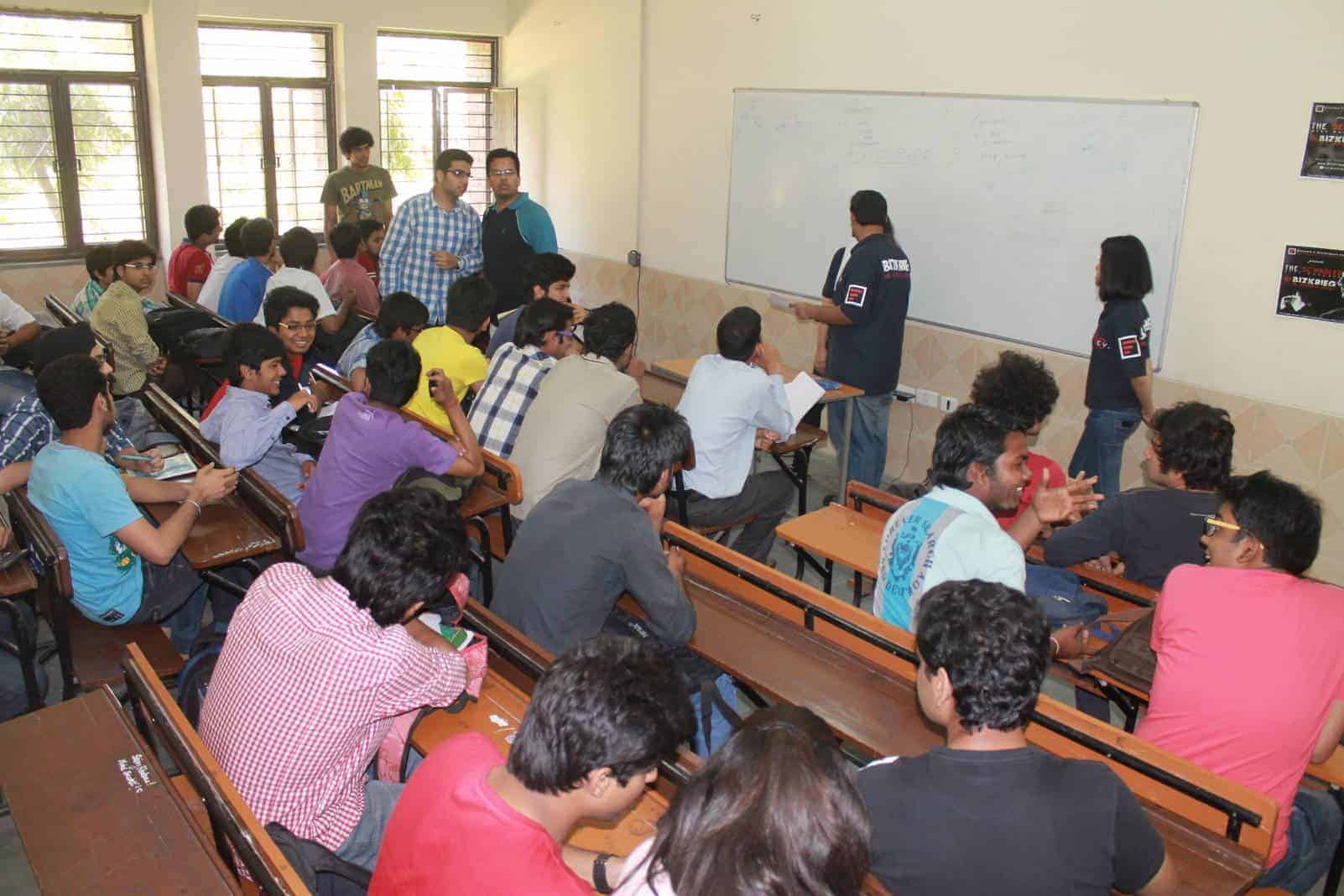
The events, named after related fictional personalities, are The Schindler – the best manager event, The Belfort – the best marketer event, The Gekko – the mock stock event and The Sheldon – the business quiz. Mehak Kathpalia from the FIC of CVS says, “With participation from all across Delhi University in the four events, we are obliged by the trust they restored in us. We at FIC, CVS strive to create experiences.” Cash prizes of Rs.40,000 are to be won in the final rounds.

